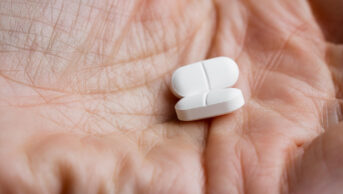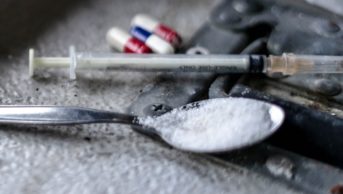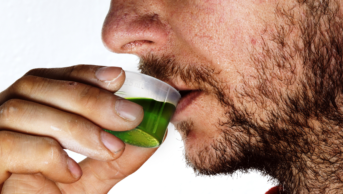
Shutterstock.com
Adolescents admitted to hospital as an emergency for drug, alcohol, or violence-related injury have a similar risk of suicide over the next ten years to an adolescent admitted for self-harming, a study[1]
published in The Lancet on 25 May 2017 has found.
However, while adolescents who self-harm receive support from mental health services, those admitted with drug, alcohol, or violence-related injury do not, and the researchers say the findings show they would benefit from a similar level of support.
The study results are based on the analysis of data on around 1 million adolescents aged 10–19 years admitted to a UK hospital emergency department between 1997 and 2012, with injuries related to self-harm, drugs, alcohol, violence and accidents.
A small number of adolescents (0.5%) died within 10 years of being admitted but the researchers calculated that the risk of death after admission for self-harm, alcohol or drug-related injuries, or violence was double that of adolescents with accident-related injuries (7.3 deaths per 1000 girls and 15.6 per 1000 boys, compared with 3.8 per 1000 girls and 6.0 per 1000 boys, respectively).
Furthermore, adolescents who were admitted for injuries related to self-harm, alcohol, drugs, or violence were more likely to die by suicide, drug or alcohol use, or homicide than those who were admitted following an accident (63.9% compared with 33.6%).
The 10-year risk of suicide for adolescents admitted for self-harm (2.9 per 1000 girls and 9.8 per 1000 boys) was similar to that of adolescents admitted for drug or alcohol-related injuries (2.5 per 1000 girls and 7.2 per 1000 boys). This risk was five to six times higher than for adolescents admitted for accident-related injuries (0.4 per 1000 girls and 1.2 per 1000 boys).
Between 10 and 25% of suicides among young adults could be associated with self-harm, alcohol, drug, or violence-related injury at age 16–19 years, the researchers estimate, and they are calling for adolescents admitted to hospital with such injuries to receive similar support from mental health professionals as those admitted after self-harm.
Researcher Annie Herbert, from UCL, London, says the study shows that these young people “should be treated with a similar level of concern as adolescents who self-harm”.
“Specialist psychosocial assessment by a child and adolescent mental health professional is recommended as standard practice for adolescents who have self-harmed. Our findings suggest this approach should also be considered for adolescents presenting to emergency departments with drug or alcohol-related injuries.”
Ged Flynn, chief executive of PAPYRUS, the charity dedicated to preventing young suicides, said: “Everyone working with young people has a duty to be ready, willing and able to ask if they have had suicidal thoughts when there is an indication they have experienced a traumatic situation: whether it be anxiety, distress, bereavement, drugs, alcohol, problems within family or relationships.
“Working every day with distressed young people seeking help, it is no surprise to PAPYRUS that mental health services are under extreme pressure. But we must all be prepared to explore and discuss everything that life throws at our young people. It is vital to our future.”

Source: Courtesy Colin Drummond
Colin Drummond chair of the Addictions Faculty at the Royal College of Psychiatrists says that if we want to tackle the rise in drug-related deaths, there must be at least 60 addiction psychiatry training posts in England and no further cuts to addiction services by local authorities.
Meanwhile, a paper published in the BMJ highlights that cuts to addiction services are making it harder for people addicted to drugs or alcohol to access the support they need, and is warning that the cuts are a false economy.
Colin Drummond, chair of the Addictions Faculty at the Royal College of Psychiatrists, writes that addiction services in England have seen cuts of around 30% and that some areas are planning cuts of up to 50%.
Heroin and morphine-related deaths have more than doubled since addiction services were transferred from NHS control to local authorities in 2012, and are now at the highest level on record, he says. Last year, there were more than 15,000 drug-related, and more than 1 million alcohol-related hospital admissions.
“Our previously high functioning treatment system has been downgraded by a short-term strategy to save money. This is a false economy,” Drummond says. “If we want to tackle the rise in drug-related deaths, there must be at least 60 addiction psychiatry training posts in England and there must be no further cuts to addiction services by local authorities.”
References
[1] Herbert A, Gilbert R, Cotrell D et al. Causes of death up to 10 years after admissions to hospitals for self-inflicted, drug-related or alcohol-related, or violent injury during adolescence: a retrospective, nationwide, cohort study. Lancet 2017 doi: 10.1016/S0140-6736(17)31045-0
You may also be interested in

Drug-related deaths among people treated for opioid dependence more than treble in ten years, study finds

There is a vulnerable group we must not leave behind in our response to COVID-19: people who are dependent on illicit drugs
